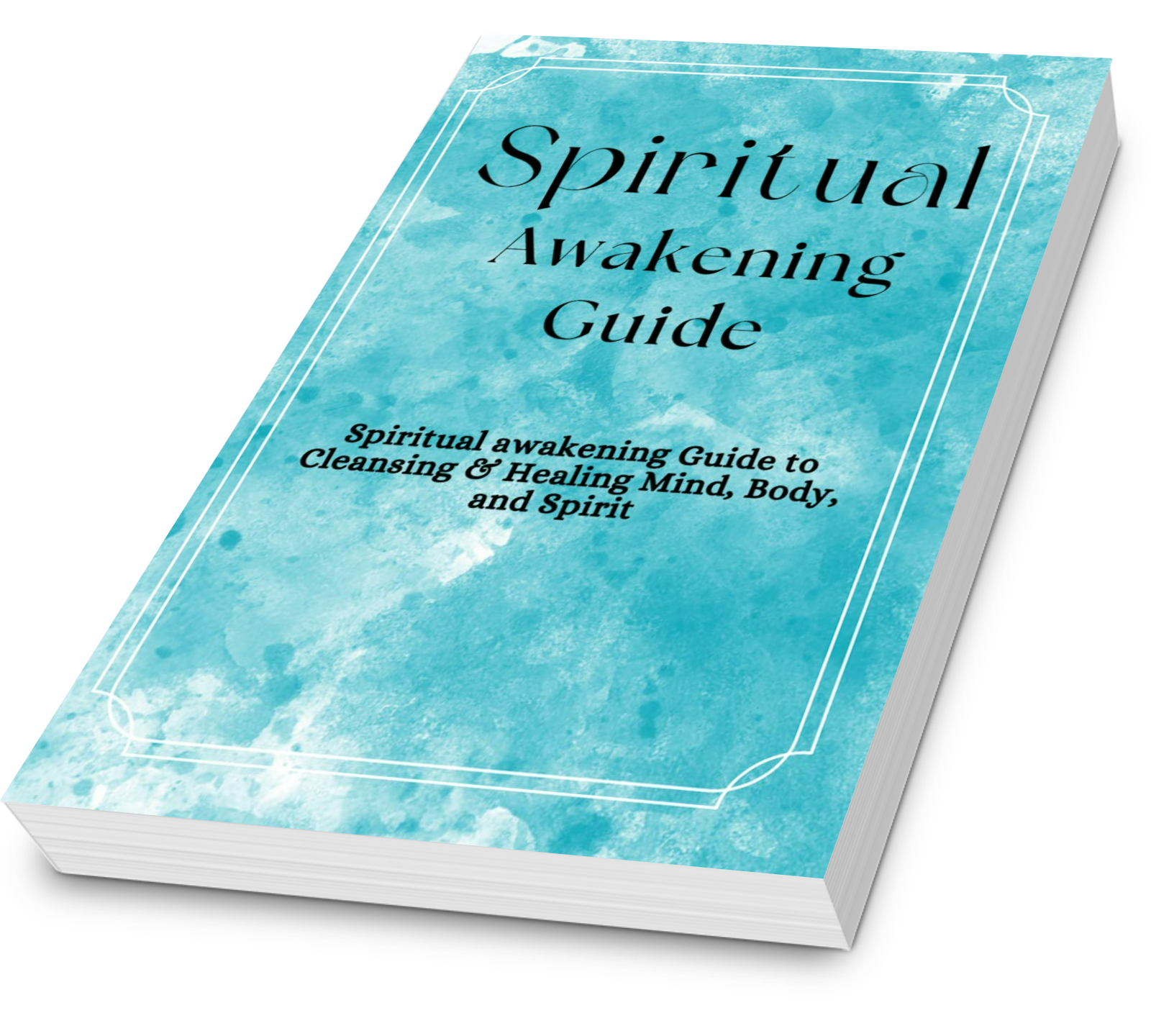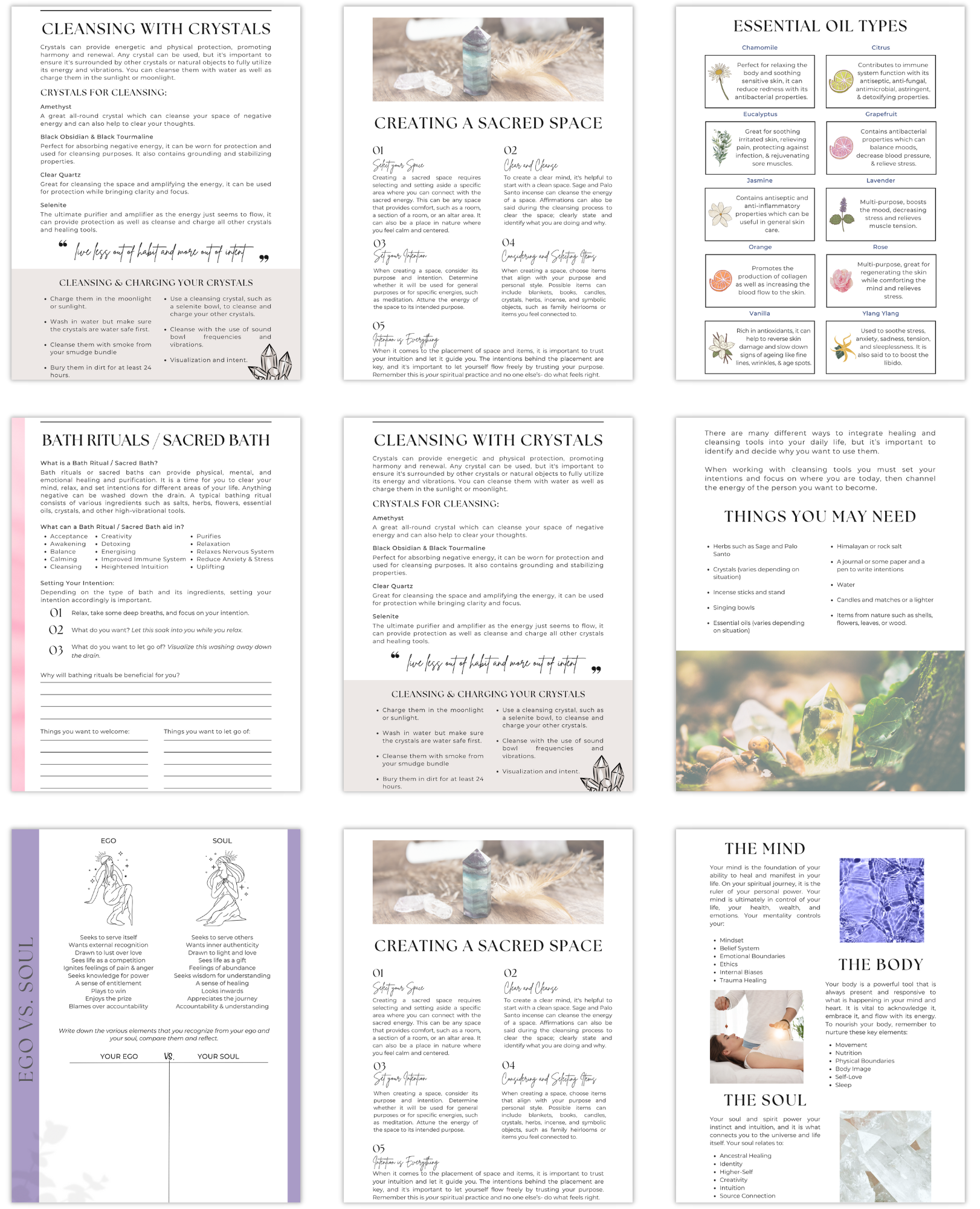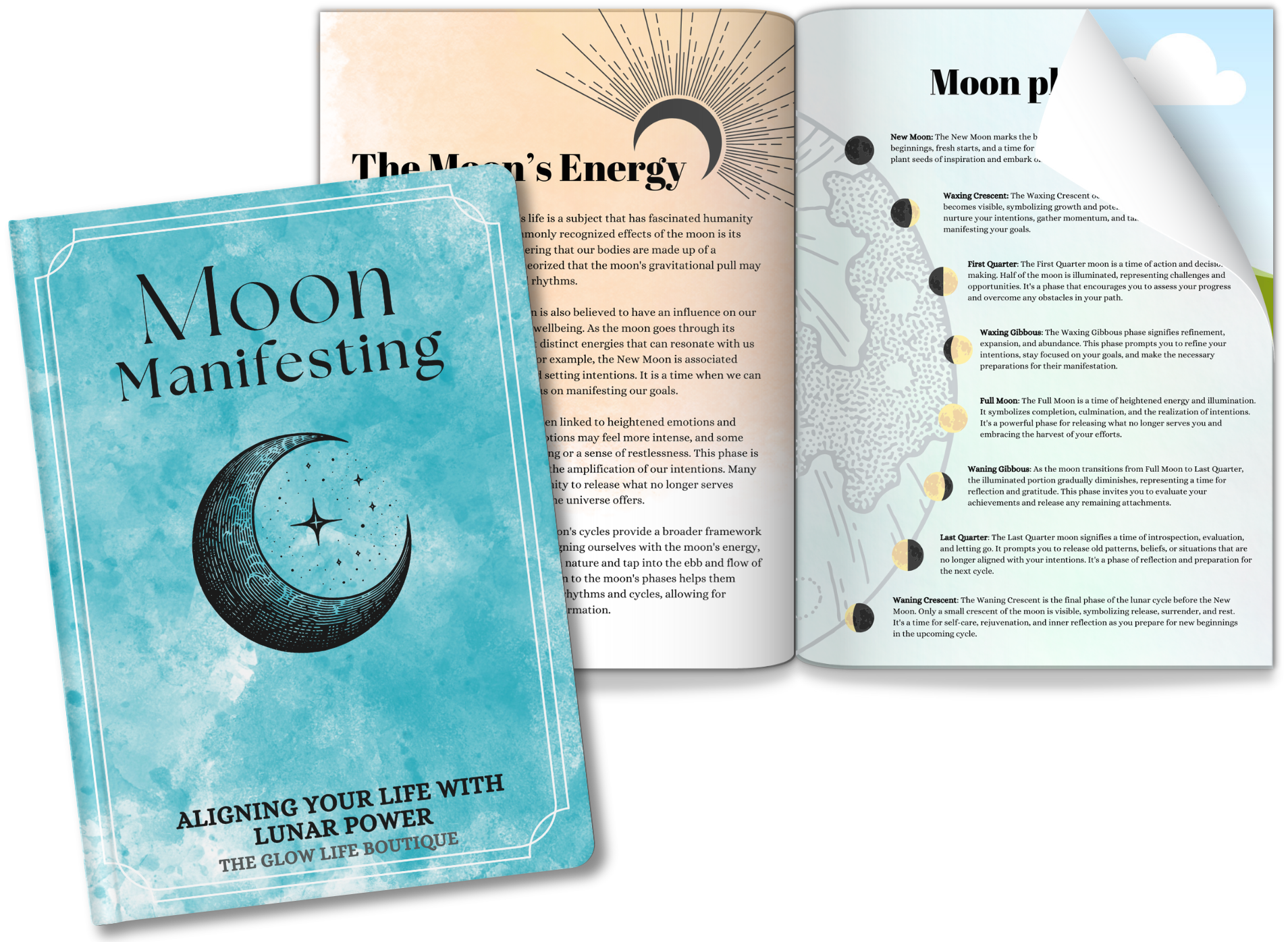A practical, soul-centered guide and workbook to align your energy, unlock clarity, and live with intention.
Awaken Your True Self: Begin Your Spiritual Journey Today


Feeling Lost, Disconnected, or Stuck in a Loop?
You’re not alone. So many of us move through life feeling like something is missing—like we’re not fully here, even when everything looks fine on the outside.
Do any of these feel familiar?
- You feel a quiet emptiness, despite doing everything “right” in life
- You’re caught in repeating cycles—with people, jobs, emotions—and don’t know how to break free
- Your mind feels cluttered, your body drained, and your soul unheard
- You crave peace, but instead feel a constant hum of anxiety, confusion, or inner conflict
- You sense you’re meant for more, but have no idea what that “more” really is
This guide was created for that exact moment—the moment when your soul whispers, “It’s time to remember who you really are.”
Your Path to Healing Starts Here
Reclaim your energy. Realign your spirit. Remember who you are.
This isn’t just another self-help guide if you’ve been craving clarity, peace, and deeper meaning. This is your sacred invitation to reconnect with your soul, release what no longer serves you, and step into your highest self.
Inside Spiritual Awakening, you’ll discover rituals, reflections, and healing practices that help you:
- Cleanse stagnant energy and emotional blockages
- Balance your feminine and masculine energy
- Ground yourself in nature and intention
- Build a sacred space that supports transformation
- Use yoga, crystals, bathing rituals, and thought work for deep, holistic healing
This is more than a guide—it’s a spiritual reset.
A return to your truth. A journey back to wholeness.

Unlock the Tools to Deepen Awareness, Heal Within, and Align with Your Higher Self
What You’ll Discover

Tap into your feminine and masculine energies to achieve emotional harmony, self-acceptance, and energetic alignment.

Unlock the secret to manifestation and mental clarity by learning how your thoughts create your reality.

Heal trauma, set emotional boundaries, and restore your physical well-being with integrated mind-body-spirit practices.

Learn how to build powerful spiritual environments at home or in nature to support your rituals and personal transformation.

Explore ancient and modern methods—crystals, smudging, sound healing, and auric sprays—to keep your energy field clear and radiant.

Discover how intentional sacred baths infused with herbs, oils, and crystals can cleanse the soul, reduce stress, and activate your intuition.

Practice daily grounding to release anxiety, reconnect with the earth, and restore emotional stability and spiritual awareness.

Redefine self-care as a spiritual necessity—nurture your soul with love, boundaries, and empowered choices.

Align your rituals with moon phases and astrological signs to amplify personal growth and intention-setting.

Ego vs. Soul exercises guide you to let go of fear-based living and step into your authentic, empowered truth.
Here’s What You’ll Explore Inside:
Each section is crafted to align your mind, body, and soul, blending ancient wisdom with modern healing tools.
- Understand the connection between mind, body & soul
- Discover your feminine and masculine energy balance
- Explore the power of thought and intention
- Create your sacred space
- Learn daily grounding & centering techniques
- Gentle yoga poses for emotional and energetic release
- Cleanse your aura with crystals, herbs, smudging, sound & nature
- Rituals for releasing stagnant energy and emotional buildup
- Create your own auric sprays and cleansing practices
- Recipes for sacred mood baths (Love, Anxiety, Creativity)
- Custom zodiac & moon phase baths with crystals, flowers, and oils
- Guided rituals for intention-setting and energetic reset
- Monthly reflection templates
- Energy amplifiers vs. energy vampires
- Self-care tracker, gratitude journal, and mood chart

Real Stories of Transformation
Don’t just take our word for it—hear from people who’ve reconnected with their purpose, realigned their energy, and experienced true inner healing through this powerful guide.
This book will give you hope, courage, and confidence! This book has given me the confidence and courage to stand up to the people in my life who are trying to coerce me into recanting my spiritual beliefs and ideas. This book has also given me the courage to face life’s difficulties, no matter what they are. Reading this book has made me a better person, more fully equipped to deal with the challenges and difficulties of my own! Five stars!”

Mike Sendler
Review on Spiritual Vibration
Every day, there’s a Lesson to be Learned……..and I’m learning: “I wasn’t even halfway through this book when I realized something powerful was happening—I was changing.One of the biggest takeaways for me so far is that you cannot move forward carrying yesterday’s pain. If you want growth, healing, and true peace, you have to release the weight you’ve been dragging behind you. That one realization alone hit me like a wave. It made me reflect, forgive, breathe deeper—and finally, begin to let go.”

Charmaine Tobey
Review on Spiritual Vibration
Truly Illuminating: “For those struggling through the awakening with absolutely no idea, desperate for even the smallest bit of advice or reassurance, this is the book for you. Not knowing where to even start looking for guidance/others with similar experiences is rough enough. So to have this book that lays it all out in a simple, understandable way is a life jacket!”

Delmar Byers
Review on Spiritual Vibration
Lifesaving guide: “This book provides wonderful examples of theory and application to integrate into one’s spiritual quest. I wish I found this book years ago to guide me through the spiritual awakening process, as it was earth-shattering and unbelievably frightening. I appreciate the thoughtfulness, the contextual information, and the subtle flow that each chapter provided; it is intricately organized and artfully exprressed.

Shanna Margolis
Review on Spiritual Vibration
But Wait, That’s Not All...
If you get the Spiritual vibration right now, you will get these bonuses
Fast-Action Bonus 2: The Spirituality Planner & Journal
The *Spirituality Planner & Journal* is a beautifully designed guide for intentional living, combining organization with soulful reflection. It offers space to plan your days, track meditation and yoga, explore chakras, set intentions, and journal your spiritual growth. Perfect for anyone seeking balance, clarity, and a deeper connection with themselves.

Fast-Action Bonus 2: Moon Manifesting
“Moon Manifesting ” is a spiritual and practical guide that helps users align their lives with the moon’s phases for personal growth and manifestation. It combines lunar wisdom with journaling prompts, rituals, and planners to support intention-setting, reflection, and holistic well-being.

You get all the bonuses absolutely FREE only if you act today!

100% Money-Back Guarantee No Questions Asked!
All you have to do is implement the secrets revealed in this blueprint for the next 30 days…
… and if you don’t see any improvement in your life, simply return your order within 30 days and I will give you…
100% Money-Back Guarantee No Questions Asked!